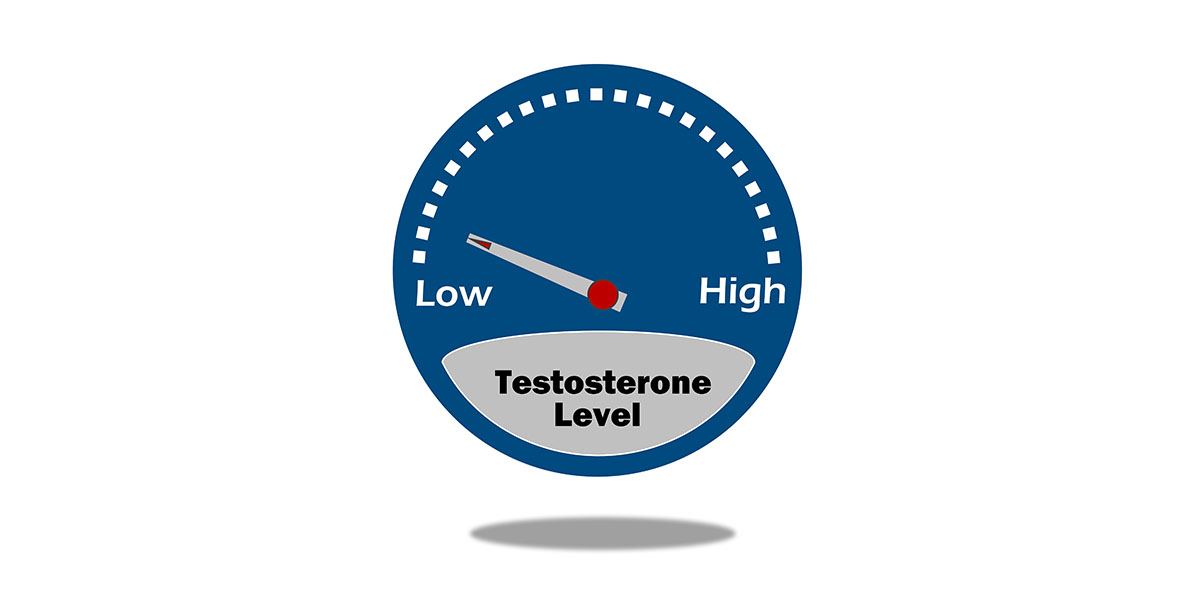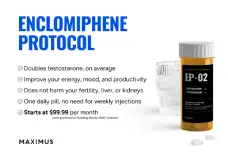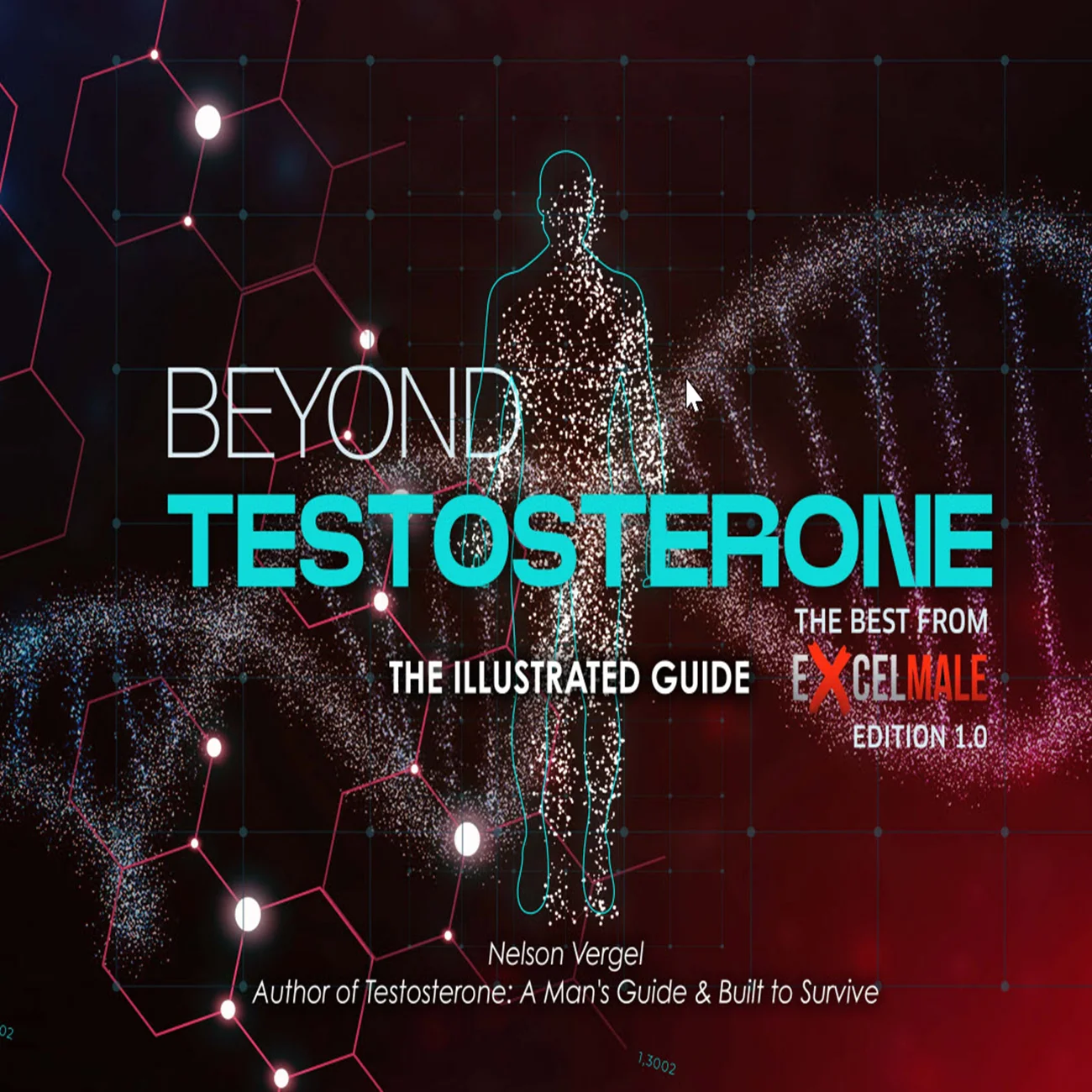I am new to this forum.
I’m an active 69 y/o male in generally good health. I’m not overweight, I exercise regularly, my resting pulse is 55, I eat fairly healthy, don’t smoke and only drink one or two beers per week. I have been diagnosed with secondary-hypogonadism. My LH and FSH were “inappropriately normal” according to my endo (both should have been higher). An MRI showed a very small tumor (adenoma) on the pituitary gland, which may be responsible—but this is an unknown and will be monitored each year going forward, to see if the tumor changes shape or size. I qualified for TRT because of low Free Testosterone and typical low-T symptoms. I have been on TRT for 6 months and currently taking 75mg Test-enanthate weekly.
I’m seeking some advice on a proposed new protocol—suggested by a new doctor.
Baseline Before TRT:
Total-T: 333 (129-767)
Free-T (dialysis/MS): 42.4 (44-244)
SHBG: 67 (10-57)
Estradiol (not sensitive): 17.7 (11.3-43.2)
DHT: 300 (106 - 719)
DHEA-S: 24 (42-290)
TSH: 3.14
T3: 3.0
My goals for TRT are (in order of priority)
Productivity: restore my energy, motivation, quick decision-making, sociability, mood.
Sexual Function: rescue my libido (now at zero), improve erections, restore penile sensitivity and orgasm intensity.
Physical: At my age, I fight muscle-loss and even just maintaining muscle is difficult. Gaining a little would be nice—but not essential.
I’ve been with an endo for 6 months. We tried daily gel (50mg then 75mg). Then switched to T-enanthate injections sub-q at 50mg weekly and then 75mg, injected weekly—which is where I am today.
Her sole focus throughout this process was on getting my Free-T to a “normal” level. She recently declared victory when my FT reached 137 pg/ml (47-244 ARUP labs). She achieved this by switching to blood labs taken at mid-point (day 3.5), instead of at trough-level (day 7, pre-injection). Through six months of treatment she has been thoroughly uninterested in whether any of my symptoms had diminished. So I've recently changed doctors.
Here are some current lab numbers:
Total-T: 1129 (250-1100) tested at mid-point
Total-T: 1102 (250 - 1100) tested at trough
Free-T (dialysis/MS): 170.4 (30-135) Quest/tested at mid-point
Free-T (dialysis/MS): 80.6 (6-73) Quest/tested at trough
SHBG: 74 (22-77)
Estradiol (sensitive): 40 (< 30) Quest/tested at mid-point
Estradiol (sensitive): 29 (< 30) Quest/tested at trough
DHEA-S: 12 (20-217)
My symptoms have improved somewhat.
My mood is a bit better and I no longer feel depressed.
I have some improvement in energy/productivity for about 3 days per week as I move through the weekly roller-coaster.
These improvements are short-lived and not as strong as I was hoping for. My endo is not interested in any of this.
My new doctor is recommending the following:
160mg Test-cyp per week, split into 80mg every 3.5 days.
500 mg HCG twice weekly
20mg DHEA daily
I have not started this yet. I can sort of understand the reasoning for this. I'm getting some benefit from 75mg but it doesn't last the whole week. The new protocol takes care of this by (1) switching to Cyprionate, and (2) adding another dose of approximately the same size each week. However, this more than doubles the amount of testosterone and adds 2 new factors (HCG and DHEA).
I’m somewhat worried that this amount of Test could push my estradiol too high and require AI to control it—I’m really not eager to go there. My current Test:E-2 ratios suggest that I could actually use more E-2 so perhaps I'm worrying over nothing.
I'm also curious about the dose of HCG. I may not need that much. Is it easier to titrate upward or downward? Would it be better to start low and move up? After 6 months of TRT my testes are already atrophied. I'm not concerned about that. I''ve no intention of having children and I'm not upset with the cosmetic effect of a smaller scrotum. I've gathered from reading other posts that HCG has other benefits (like making you generally feel better), but I wouldn't want to take more than necessary.
Sorry if this post is a bit scattered. I'm just a bit nervous about making such a big change all at once.
Any comments, suggestions or advice would be welcome. Thanks to all of you. This is a great site.
I’m an active 69 y/o male in generally good health. I’m not overweight, I exercise regularly, my resting pulse is 55, I eat fairly healthy, don’t smoke and only drink one or two beers per week. I have been diagnosed with secondary-hypogonadism. My LH and FSH were “inappropriately normal” according to my endo (both should have been higher). An MRI showed a very small tumor (adenoma) on the pituitary gland, which may be responsible—but this is an unknown and will be monitored each year going forward, to see if the tumor changes shape or size. I qualified for TRT because of low Free Testosterone and typical low-T symptoms. I have been on TRT for 6 months and currently taking 75mg Test-enanthate weekly.
I’m seeking some advice on a proposed new protocol—suggested by a new doctor.
Baseline Before TRT:
Total-T: 333 (129-767)
Free-T (dialysis/MS): 42.4 (44-244)
SHBG: 67 (10-57)
Estradiol (not sensitive): 17.7 (11.3-43.2)
DHT: 300 (106 - 719)
DHEA-S: 24 (42-290)
TSH: 3.14
T3: 3.0
My goals for TRT are (in order of priority)
Productivity: restore my energy, motivation, quick decision-making, sociability, mood.
Sexual Function: rescue my libido (now at zero), improve erections, restore penile sensitivity and orgasm intensity.
Physical: At my age, I fight muscle-loss and even just maintaining muscle is difficult. Gaining a little would be nice—but not essential.
I’ve been with an endo for 6 months. We tried daily gel (50mg then 75mg). Then switched to T-enanthate injections sub-q at 50mg weekly and then 75mg, injected weekly—which is where I am today.
Her sole focus throughout this process was on getting my Free-T to a “normal” level. She recently declared victory when my FT reached 137 pg/ml (47-244 ARUP labs). She achieved this by switching to blood labs taken at mid-point (day 3.5), instead of at trough-level (day 7, pre-injection). Through six months of treatment she has been thoroughly uninterested in whether any of my symptoms had diminished. So I've recently changed doctors.
Here are some current lab numbers:
Total-T: 1129 (250-1100) tested at mid-point
Total-T: 1102 (250 - 1100) tested at trough
Free-T (dialysis/MS): 170.4 (30-135) Quest/tested at mid-point
Free-T (dialysis/MS): 80.6 (6-73) Quest/tested at trough
SHBG: 74 (22-77)
Estradiol (sensitive): 40 (< 30) Quest/tested at mid-point
Estradiol (sensitive): 29 (< 30) Quest/tested at trough
DHEA-S: 12 (20-217)
My symptoms have improved somewhat.
My mood is a bit better and I no longer feel depressed.
I have some improvement in energy/productivity for about 3 days per week as I move through the weekly roller-coaster.
These improvements are short-lived and not as strong as I was hoping for. My endo is not interested in any of this.
My new doctor is recommending the following:
160mg Test-cyp per week, split into 80mg every 3.5 days.
500 mg HCG twice weekly
20mg DHEA daily
I have not started this yet. I can sort of understand the reasoning for this. I'm getting some benefit from 75mg but it doesn't last the whole week. The new protocol takes care of this by (1) switching to Cyprionate, and (2) adding another dose of approximately the same size each week. However, this more than doubles the amount of testosterone and adds 2 new factors (HCG and DHEA).
I’m somewhat worried that this amount of Test could push my estradiol too high and require AI to control it—I’m really not eager to go there. My current Test:E-2 ratios suggest that I could actually use more E-2 so perhaps I'm worrying over nothing.
I'm also curious about the dose of HCG. I may not need that much. Is it easier to titrate upward or downward? Would it be better to start low and move up? After 6 months of TRT my testes are already atrophied. I'm not concerned about that. I''ve no intention of having children and I'm not upset with the cosmetic effect of a smaller scrotum. I've gathered from reading other posts that HCG has other benefits (like making you generally feel better), but I wouldn't want to take more than necessary.
Sorry if this post is a bit scattered. I'm just a bit nervous about making such a big change all at once.
Any comments, suggestions or advice would be welcome. Thanks to all of you. This is a great site.
















